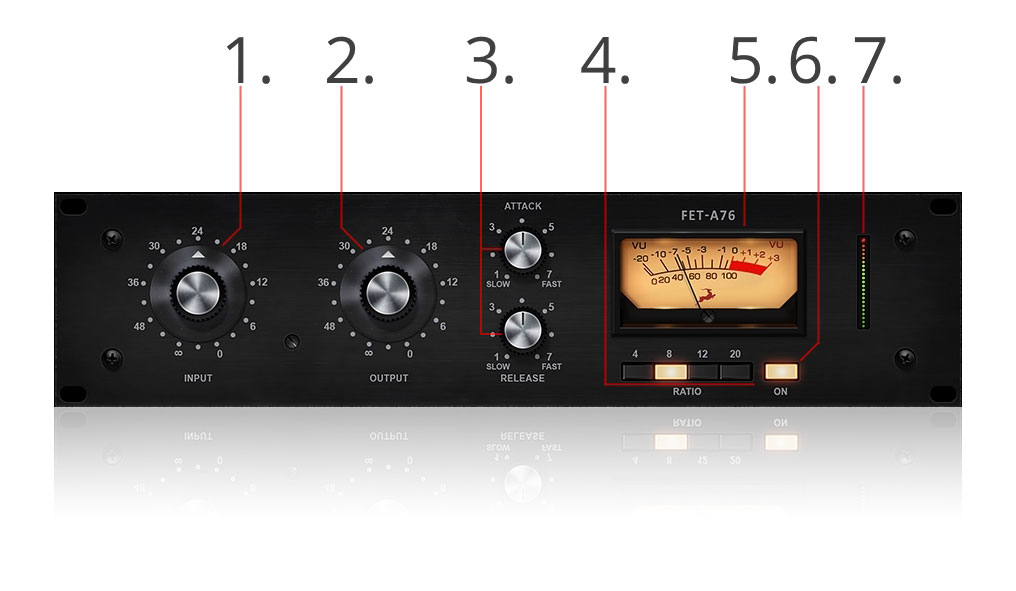1. Introduction
FET-based compression has been a staple in the studio since its invention in the late ’60s. The Antelope Audio FET-A76 captures all the subtleties and nuances of a vintage FET compressor. Just like its analog progenitor, it’s useful not only for controlling dynamics and sculpting tone, but also for its ability to add punch and presence to anything passing through its circuits.
Mirroring the original hardware’s simplified and intuitive interface, the FET-A76 features Input & Output gain controls and a selectable 4-way ratio control with an additional “all-buttons-in” mode for an aggressive compression character.
The FET-A76 shines in a wide range of applications — from vocals, to bass guitar, to bus compression. It’s a powerful companion to Antelope Audio’s FPGA EQ models, such as the BAE-1073 EQ.

